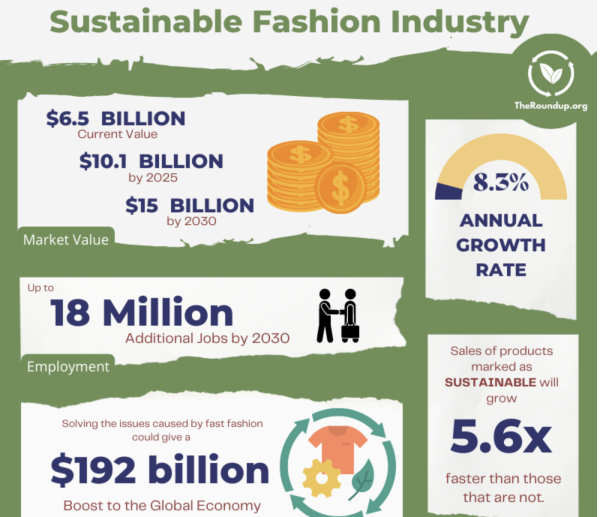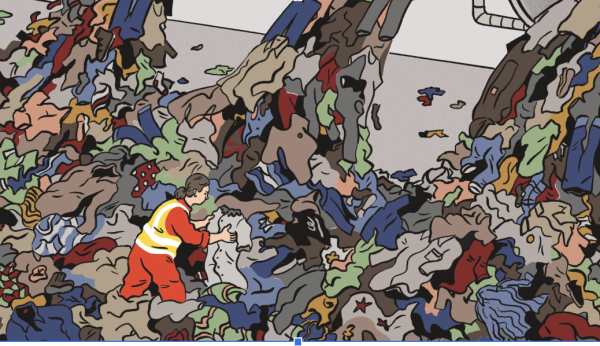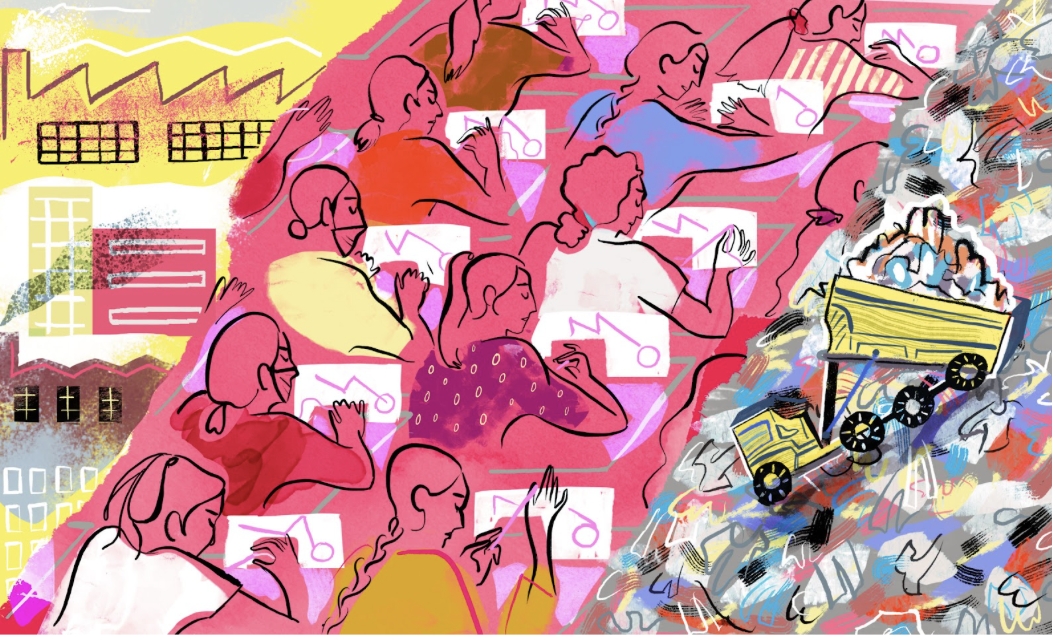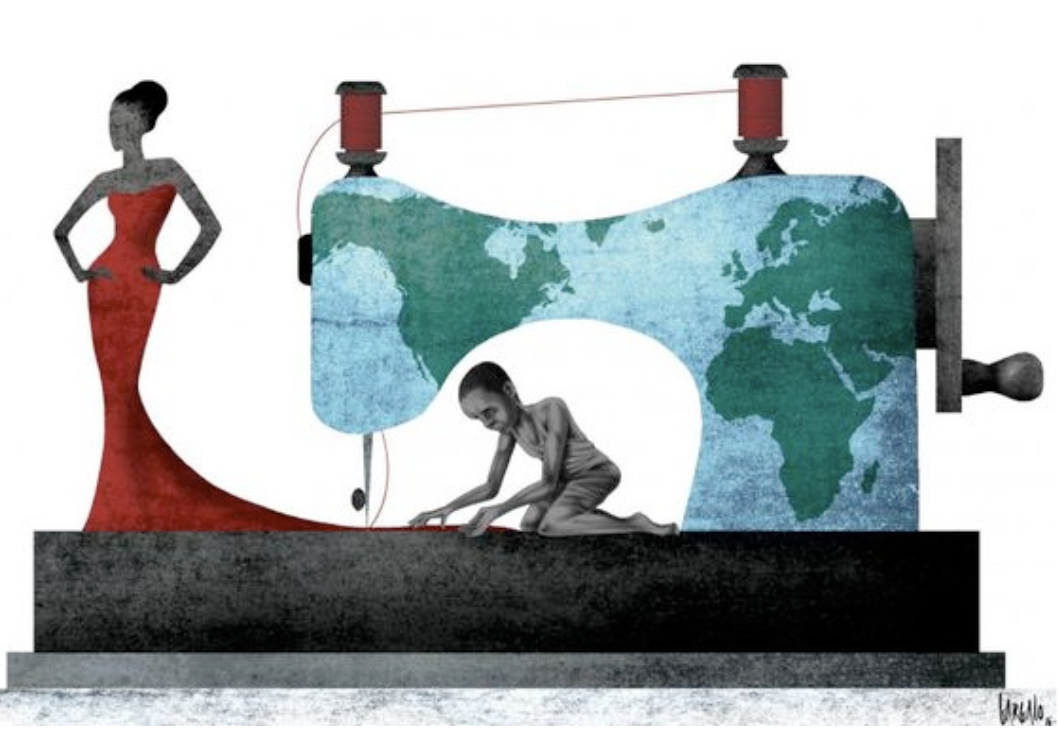Nowadays, the fashion trends coming and quickly going on social media can only accumulate to the overconsumption of one thing: fast fashion. While the concept seems efficient in keeping up with the swift circulation of trends at affordable prices, the cost of fast fashion is more dire than it seems. The adverse effects of this rapid-fire clothing phenomenon—unsustainability, landfills on landfills, and worker mistreatment—far exceed the advantages.
Social media’s impact on the fashion industry today is greater than ever, but it is especially affecting trends. Before current digital media, trendsetting was reliant on the influence of models, movies, celebrities, and fashion magazines. Because fashion-invested audiences were exposed to trends on a relatively smaller scale, the cycles were slower and retained longevity. However, the abrupt rise of social media completely interferes with this rhythm. Fashion trends receive widespread exposure on online platforms such as Instagram, Tiktok, Pinterest, and YouTube. These trends are ultimately reduced to fads, also known as microtrends, and the rate at which people adopt and abandon them has become alarmingly faster than before.

But how does fast fashion come into the picture? Fast fashion is known for its efficient transition from designing to selling clothing, while these processes could take up to weeks or months in traditional fashion. What usually took weeks or months to execute is now done in a fraction of the time, giving consumers, well, fast fashion. And the cherry on top? All of this clothing is marked at shockingly low prices, encouraging consumers to purchase, purchase, purchase.

Taking this into consideration, these perks inevitably could lead to overconsumption— and too much of something is never good. For instance, out of the 100 billion garments produced by fast fashion brands per year, 92 million of these garments end up in landfills. The number of times a clothing item is worn declined by more than 35% over the last 15 years because of fast fashion.
Unfortunately, these clothing items also tend to end up in thrift stores. Thrift stores are all about promoting sustainable fashion, and are arguably the best source of sustainable fashion due to the utilization of used textiles. However, with items such as Shein appearing, it leaves consumers—who want to practice fast fashion—conflicted. The cycle of buying fast fashion continues even if it’s indirect, somewhat taking away the sustainability of thrift stores.

As trends become oversaturated, an increased number of clothing items are thrown out solely because they have lost their novelty. Most clothing produced in fast fashion is made up of cheap synthetic fibers, such as polyester. However, these materials have abysmal consequences on the environment. These materials can be considered micro plastics, which can take up to 200 years to decompose. You could only imagine the insurmountable number of fast fashion textiles gone to waste—it’s the equivalent of one garbage truck of clothes dumped every second. The fashion industry takes up 10% of global emissions, but because of fast fashion waste, this number is estimated to be 50% by the end of 2030.

Fast fashion does not only impact us on an environmental level but also on a societal level. Workers in the fast fashion industry are exploited by being paid unlivable wages, having their pay withheld, and being forced to work in hazardous conditions. The US Department of Labor found this is occurring in numerous countries such as Argentina, Bangladesh, Brazil, China, India, Indonesia, Philippines, Turkey, Vietnam, and others. In 2013, an eight-floor garment factory building called the Rana Plaza in Bangladesh collapsed, killing over 1,000 workers and being the deadliest accident in the garment industry. Over the last decade since, 5 year term protocols like the Accord on Fire and Building safety and the Alliance for Bangladesh Worker Safety were established to ensure safety for garment factory workers.

Although there was some progress made in regards to safety, there is still much to be done. The heavy, demanding purchases of global consumers has significantly worsened during the Covid-19 pandemic. These buying practices continue to implement conditions that prompt factory owners to severely underpay and overwork their workers.
Additionally during the pandemic, canceled orders accumulated up to $3 billion in value, causing employees to experience mass layoffs. Economic hardship continues to torment garment workers in fast fashion, all because of the industry’s existence in the first place. Fast fashion’s carelessness and greed for profit does not fail to have detrimental effects on lives.
So what should we do? As consumers, we have the power to choose what we purchase. Fashion is a great outlet for creativity and self expression, but it should not interfere with our quality of life.
We can choose to shop more consciously through sustainable brands and designers. It may not be as affordable, but this clothing is priced fairly considering the labor, materials, equipment, and salaries of workers that go into the pieces. Furthermore, we could boycott fast fashion.
However, simply refraining from purchasing fast fashion is not enough to halt it completely. To create effective change, we need to advocate for its end on a legislative level. This may entail supporting stricter anti-waste laws and backing legislation to protect garment workers’ rights. The fashion industry is considered to be the least regulated industry under law, but we can be the ones to change that.



